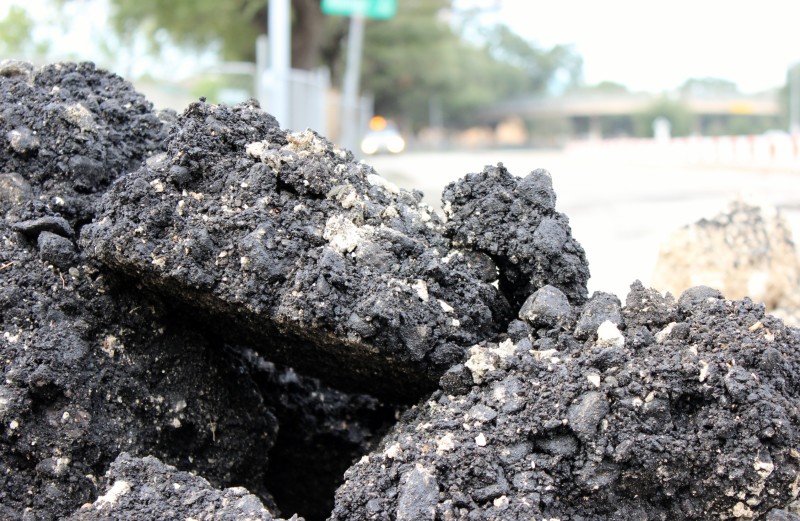This story originally appeared on Houston Public Media.
There were so many potholes in Houston’s streets that Mayor Annise Parker called it a “crisis” earlier this year. Last month, the candidates for her job couldn’t stop talking about it: Sylvester Turner promised “better roads.” Stephen Costello said “I’ll fix your streets.” Bill King said, “Just because Houston put a man on the moon, our streets don’t have to look like its surface.”
Resurfacing those streets with a new coat of asphalt would certainly help. Across Houston, the city says it’s over-laying new asphalt on 150 miles of streets a year at a cost of over $11 million, or about $75,000 per lane, per mile.
But hold on. Asphalt is made from crude oil. It’s what’s at the bottom of the barrel after the refining process. With oil prices having dropped so much, it would seem to follow that asphalt would be cheaper, allowing the city to repave more street for the same money.
But is that what’s going on? “No, that is not what’s going on,“ Eric Dargan, Deputy Director of Houston’s Street & Drainage Division says.
Dargan says despite oil’s plummeting price, the cost of asphalt has barely budged. “Asphalt has reduced, but a very, very small percent,” Dargan says, not anywhere near oil’s plummet.
“No, nowhere close to half. We were paying approximately $50 per ton for asphalt, now we’re paying right around $49 per ton. “
Why? Economists trace it back to the refining process and changes made over the past decade.
“So we’re not seeing nearly the same level of decline as we normally would expect given what’s happened in the oil market,” Dave Zwicke, Director of Market Intelligence for the Portland Cement Association says.
Liquid asphalt was considered almost a waste product, so refiners started using new techniques to minimize that waste so they’d get more gasoline and other products that are worth more.
“As a result, as oil gets refined, there’s less leftover residual for the asphalt supply in the market,” Zwicke says.
So there’s less left at the bottom of the proverbial barrel? “That’s exactly right,” Zwicke tells News 88.7.
Less asphalt is available, so despite the price of oil dropping, the price of asphalt has remained about the same.
But there may be one way cities, like Houston, can still cut the cost of re-paving — if only by a bit.
“As long as I’ve been in the industry, we’ve actually been recycling,” Kent Hansen, an engineer with the National Asphalt Pavement Association says.
Hansen says in the last decade, city street departments and the Texas Department of Transportation have been recycling increasing amounts of the old pavement when they remove it to re-build a road. They used to just haul it to a landfill, but now, mix it back in with new asphalt.
“The biggest reason to do this is cost savings. I estimate that over $130 million were saved in 2014 in Texas using those materials. And that’s money that can go into paving more roads and keeping our roads in good shape,” Hansen says.
Eric Dargan with the City of Houston agrees that recycling helps reduce costs.
“We’re actually being paid money for the recycled asphalt. So the asphalt companies are paying us for our old asphalt. I’m not going to tell you it’s major dollars, but it does add up at the end of the day. A $100,000 here and there can go a long way,” Dargan says.
















